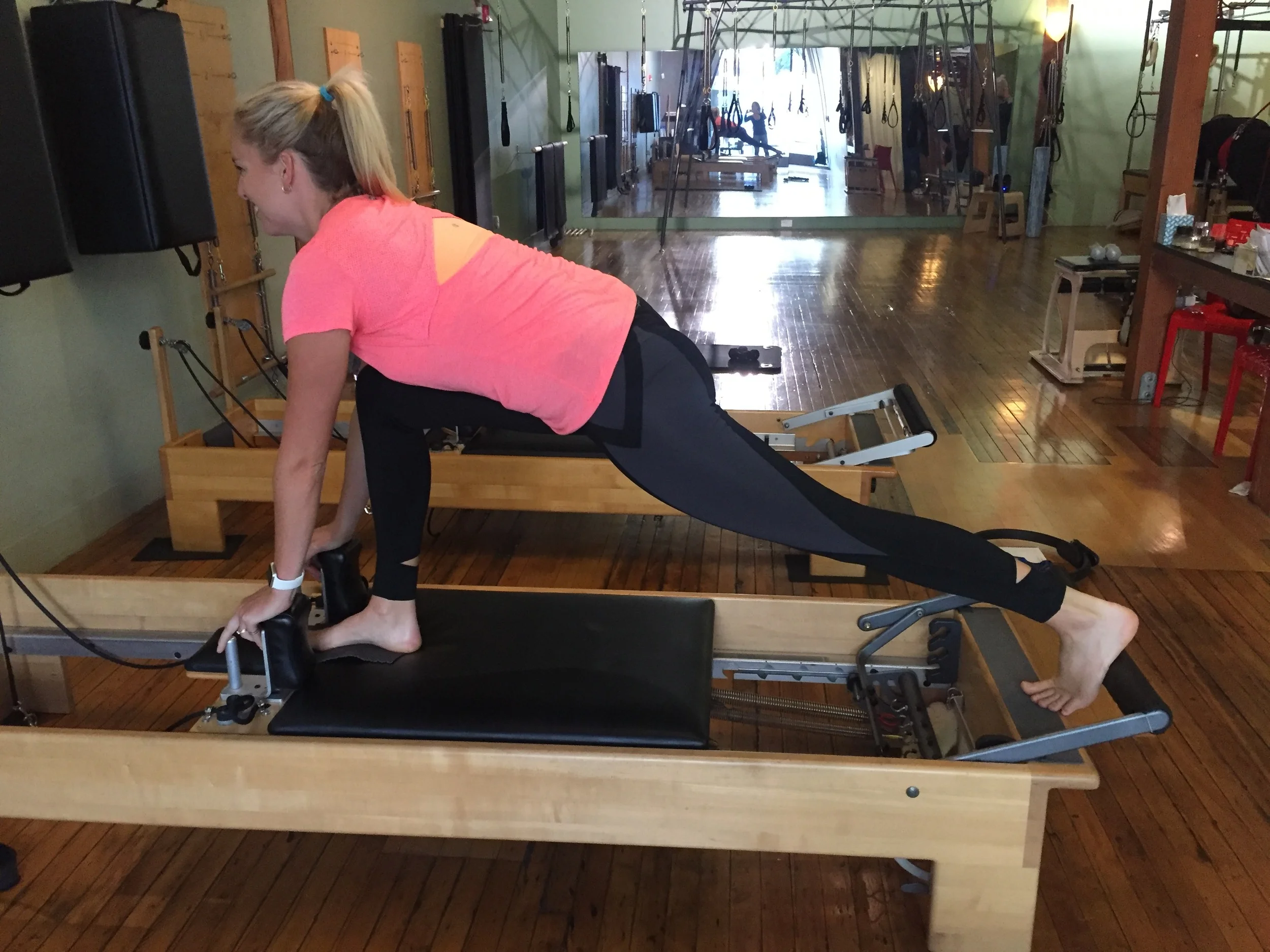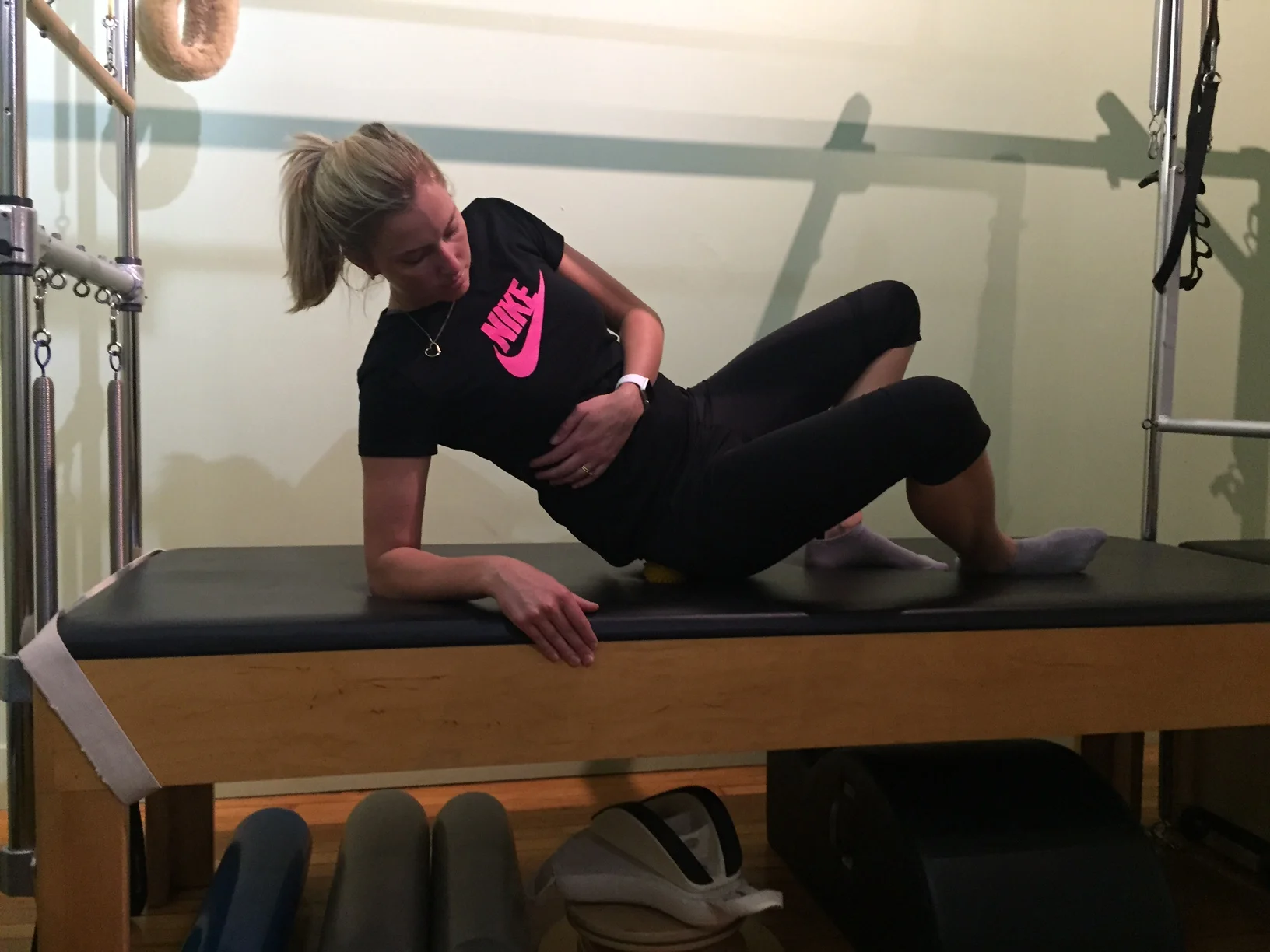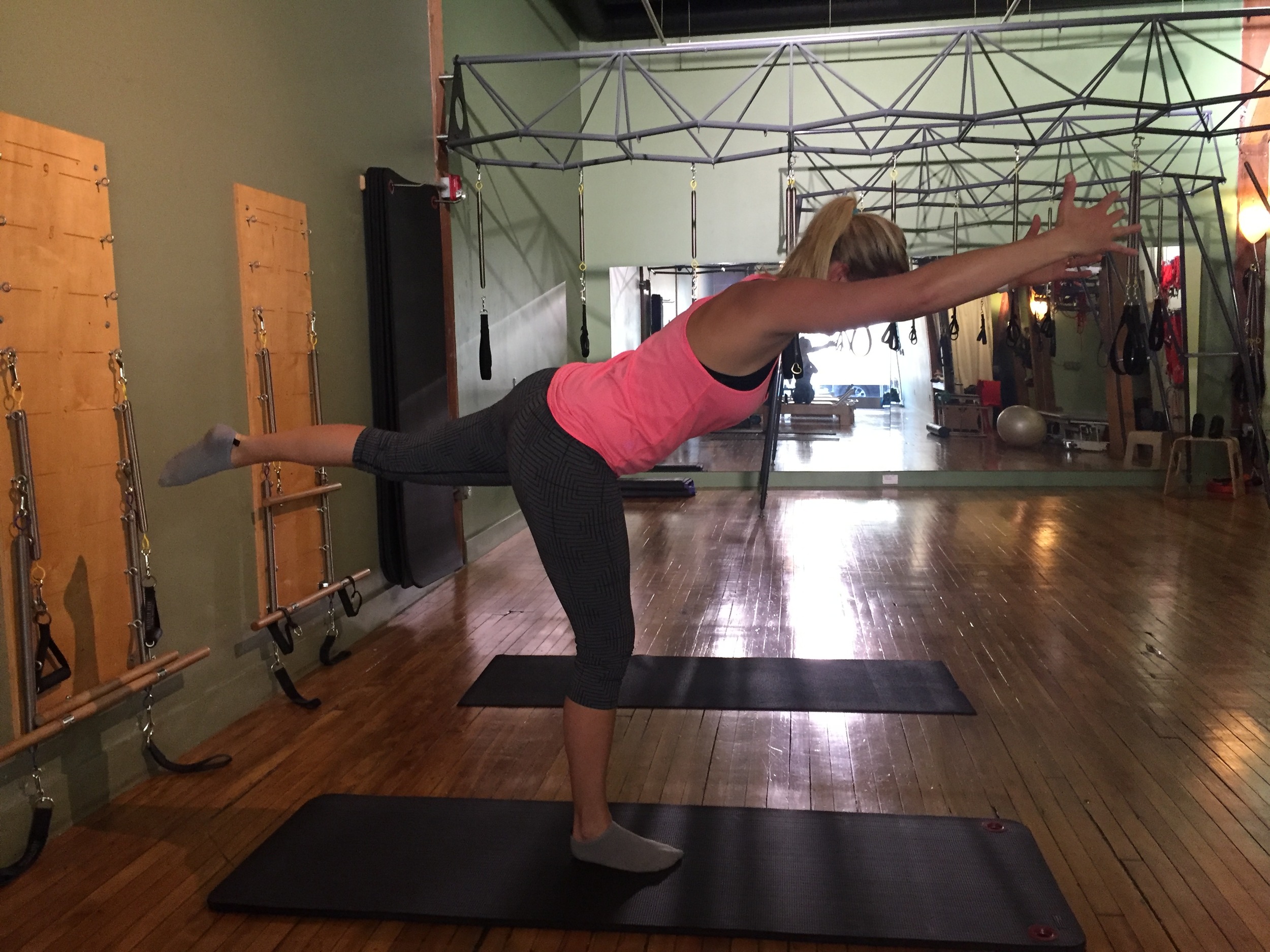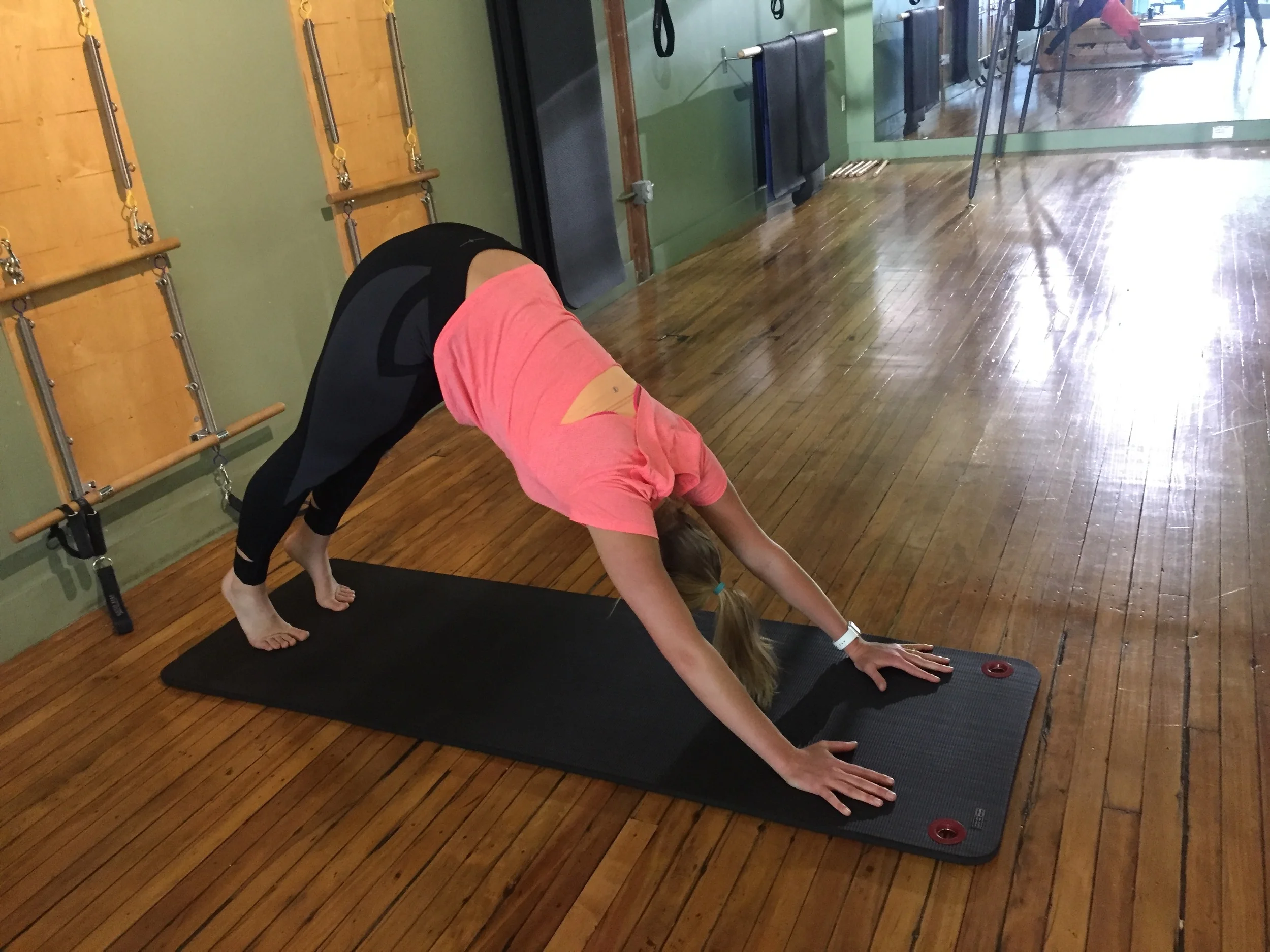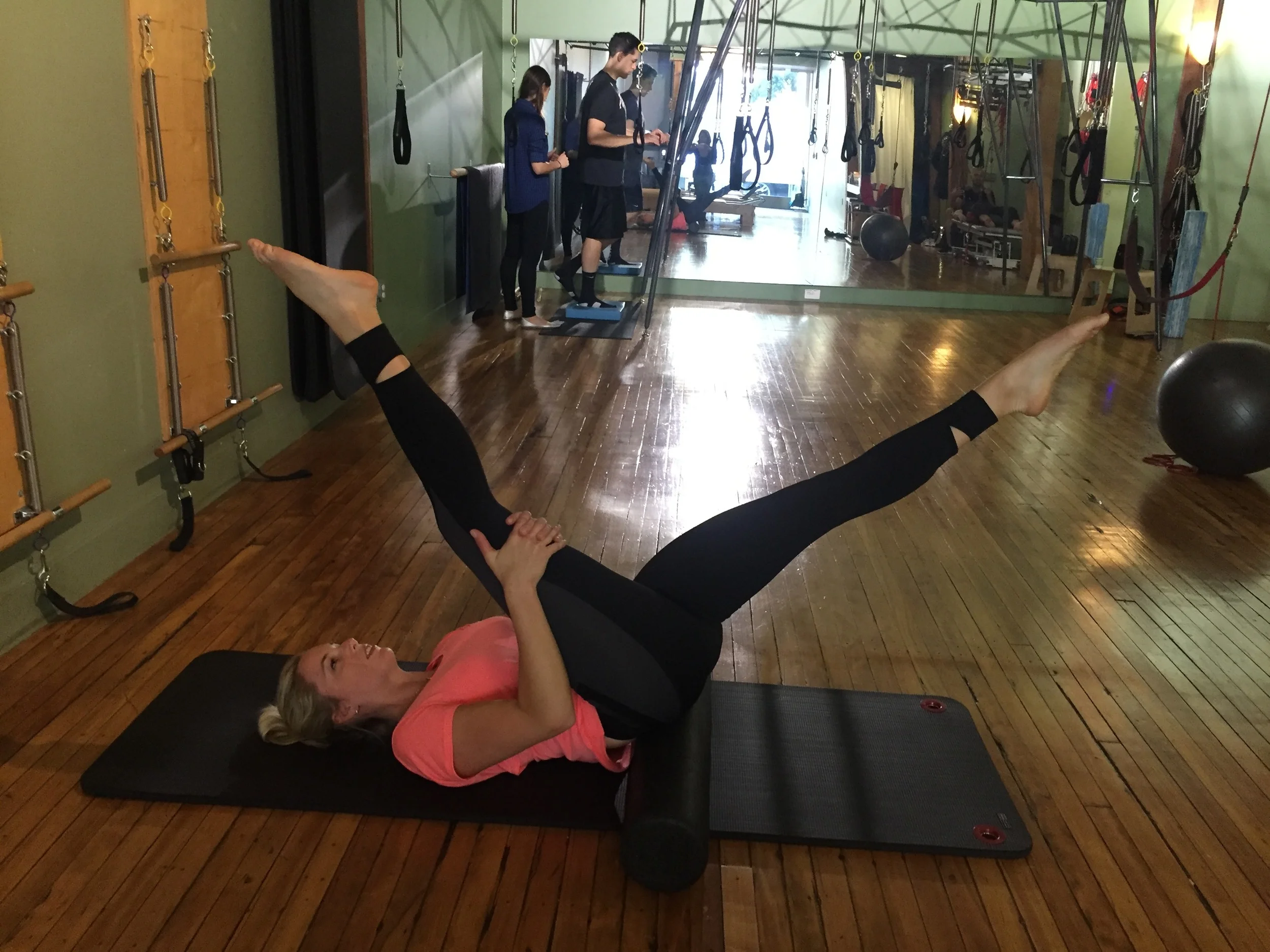A targeted Pilates program for low back pain
Visiting Melbourne recently I had the pleasure of spending the day with Dr Lynn Bardin, observing her Spine Pilates class in Park Orchards. The reason I wanted to visit SPINE Pilates was to learn more about how Physiotherapists are currently using evidence-based practice & knowledge of clinical anatomy to guide their exercise prescription and Lynn has integrated both of these elements into her program.
Dr Lynn Bardin is a Musculoskeletal Physiotherapist and lecturer in Clinical Anatomy at the University of Melbourne. Lynn is a consultant Physiotherapist at Superspine Clinic in Forest Hill, and also consults at Austin Hospital Physiotherapy, where she has developed and researched the ‘Better Backs @ Austin’ programme.
Having taught Pilates for the past six years and I'm constantly learning from those around me. Always wondering why different teachers choose different exercises, explanations and equipment. Working out which patients prefer certain exercises and what makes one exercise challenging and another easy. Pilates comes in many forms and it is a great learning experience to ask other teachers what it means to them and how they explain it to their clients.
SPINE Pilates is a floor based class which makes use of the fit ball, theraband and weights, providing a full body workout. In this blog I'd like to share some of the learning points and discussion points that came from this fantastic observational experience. For me, it's such a strong reminder to always surround yourself with leaders in the field and volunteer your time to be around those who have an extensive knowledge and background in areas you wish to develop skills in.
defining pilates
I've previously written a blog on the definition of Pilates, which explored the contraindications, indications and benefits of Pilates. At the time I was intrigued by the idea of understanding which people benefited from Pilates. What is interesting is that when I go back to read it, I'm reminded that whilst the Pilates Method originated with Joseph Pilates and can still be taught in a traditional form, current-day Pilates is an umbrella term and there are no strict guidelines for exercise prescription, dosage, equipment use and teaching styles. Pilates is described in the literature as a form of exercise that focusses on: functional integration of pilates principles, encouragement, feedback, home exercises, client self-correction, and therapist reassessment.
Tailoring Pilates to Low Back Pain
A more classically focussed Pilates program will included exercises to focus on the following principles: breathing, flow, precision, centering, concentration, control, alignment and integration. SPINE Pilates allows for all of these traditional principles to be met while also accomodating for current concepts revolving around exercise prescription for low back pain. The following elements were aspects of Lynn's class that I really enjoyed and was excited to see included in the program. This blog is not an outline of each exercise but more what each exercise/principles made me think and taught me...
Breathing:
A greater emphasis was placed on normal breathing through movement. Breathing is a subconsciously driven bodily function and being able to continue with a normal breathing sequence is more important for making exercises functional, than to time them with the 'in and out' movement. When teaching clients new exercises, I believe you should focus on ensuring their breathing stays comfortable and consistent, that upper chest breathing or breath holding doesn't occur and that they don't become rigid. Perhaps a good way to think about it ... if you can't breathe naturally and comfortably then perhaps it is an indication the exercise is not suitable?
Pelvic floor & deep abdominal muscle activation:
A topical question that many teachers and clients ask is someone's perspective on whether specific cueing should occur for pelvic floor or deep abdominal muscles with each exercise. When I asked Lynn what her perspective was on this she explained that it is really important to remember what your goals and focus is for each client. With the participants of SPINE Pilates, their main focus is moving well and keeping them strong for the health of their spine. Assuming everyone participant requires pelvic floor cueing is erroneous thinking and can result in exercises being too complex and may reduce compliance. Each exercise has a focus - stick to that and remember why you chose to incorporate it within your routine.
Core strength or rotational control:
Many teachers will now agree that the term 'core' doesn't refer to your stomach muscles and that having a 'strong core' is more about a functional and dynamic kinetic chain, not a six-pack. We need to have dynamic movement control and appropriate recruitment of muscles around the lower limb, trunk and shoulder girdle. Many of the exercises in SPINE Pilates focussed on control of the body through rotation movements, and in particular, unilateral rotational movements. One example was starting in 4-point kneeling and then lifting one arm upwards into horizontal extension and thoracic rotation while balancing on the remaining 3 limbs. Lynn even uses a small weight to bring in a bit more shoulder strength.
Many exercises and movements can be biased towards a single plane of movement and I would encourage you to ensure that each plane of movement is incorporated into your exercise routine, particularly rotational movements and exercises that require counter-rotation. SPINE Pilates incorporated exercises in every plane of movement, which for the lower back includes rotation, flexion, extension and lateral flexion.
Start and end position:
Something to always consider with your clients is their ability to move through the entire range of movement. Remember that the limbs are levers and can act as short or long ones. For many people with lower back issues, moving the limbs to a full outer range can lead to heavy loading through the spine and it was clear that SPINE Pilates recognises which movements are at risk of becoming too loaded. In these exercises the levers are reduced and patients aren't cued to take each limb to the very end of range and instead cued to stay with in the range they can control well.
Incorporating the whole body:
Many of the exercises Lynn uses incorporate both the upper and lower body. One example is sit to stand off a fit ball with arms held in flexion above the head. When I saw this I thought - awesome! How much does thoracic mobility and scapula stability impact the lower back during functional task? How often does the movement pattern of a squat impact our ability to lift something from the floor to above our head, like putting away items in the pantry?
Balance and anti-gravity muscles:
The final component of Lynn's class that I recognised as being specifically targeted to the 'low back pain' population was an emphasis on exercises done on one leg, to improve balance and exercises that targeted the anti-gravity muscles needed for posture in standing and sitting.
After observing Lynn it was clearly evident that there is a huge amount of clinical reasoning and scientific researching backing this program. I was so excited to see that a Pilates program could be modified to include the principles above and be so targeted to the needs of a specific patient-population. For low back pain specifically, this program is grounded, up-to-date and includes exercises based on current evidence-based practice.
It was wonderful to have the opportunity to learn from Lynn & it motivates me to continue to observe others, seek for new ways to improve my practice and continue learning about the body.
Reflecting on my personal growth with teaching this year.
Working this year in a studio with a strong influence in classical Pilates, I've been exposed to both sides of the teaching realm (classical and clinical) and learnt many aspects from both. Although these principles are not specific to low back pain, I thought it was a good opportunity to share some of my personal learning experiences from this year. Currently I try to focus on teaching length, flow, concentration, balance and rotational control.
Finding length is a new focus of mine and while we spoke about leverage above, I really try to find a range of movement that someone can control through their entire range. Reaching the leg or arm to the full movement helps to bring in the whole limb, something I think we need to move well in functional daily tasks.
Flow and concentration are aspects of how my clients move that give me feedback on whether the exercise I've given them is paced correctly or too hard. I ask myself... "can they breathe well, are they steady through range, is their movement smooth, can they reach to the end of the movement?" If these elements are absent then I might need to vary my cueing or change the exercise.
I watch more to see how people use their feet and no longer let people wear shoes. The posture beginning at the feet has an impact on how people position their knees and hips and how they transfer weight and energy through the entire limb.
I watch how people breathe and where they position their rib cage. Reasons for this are explained above.
Balance and rotational control is incredibly important and functionally relevant. Scooter is an example of a reformer exercise that comes with many variation and modifications and I love this exercise for training balance, lower limb strength and rotational control. Many other single leg or arm tasks will achieve the same thing too.
Most importantly, I explain to each person why I am teaching them that specific exercise, what I want them to focus on and how we progress movements still keeping this focus. I strongly believe that we need to share our knowledge with each client to improve their understanding of their program and awareness of their own bodies. That way they can apply these principles of movement to other forms of exercise and training.
This year my teaching has grown and changed significantly and I'm excited to see what 2016 holds. Here are some of my favourites for 2015. Sian :)
In order from left to right: using the reformer to do yoga poses for trunk lateral flexion and rotation, mermaid, skating, Russian splits, arabesque with shoulder horizontal extension, spiky ball gluteal release, half kneeling groin stretch, arabesque with arms above head, downward facing dog stretch, scissors on the foam roller, and pretzel stretch.







